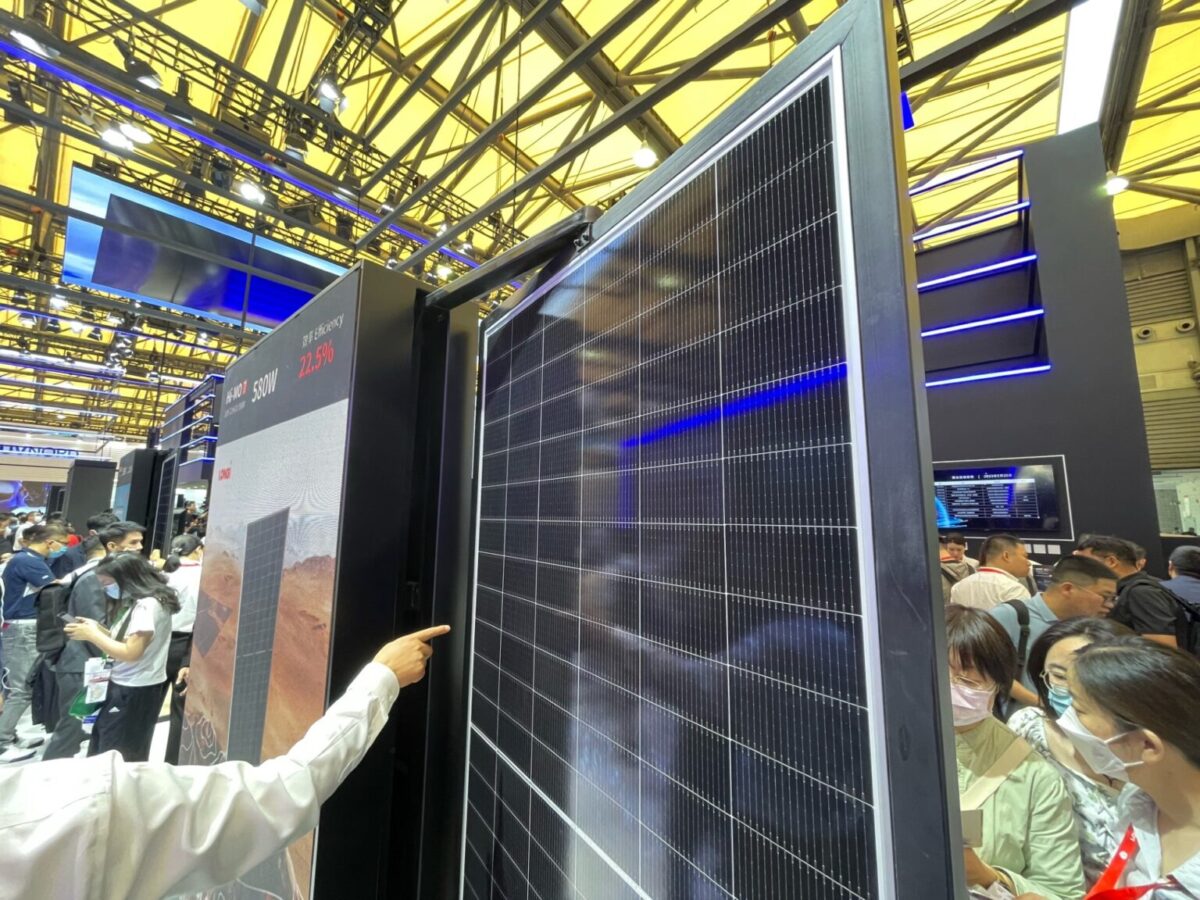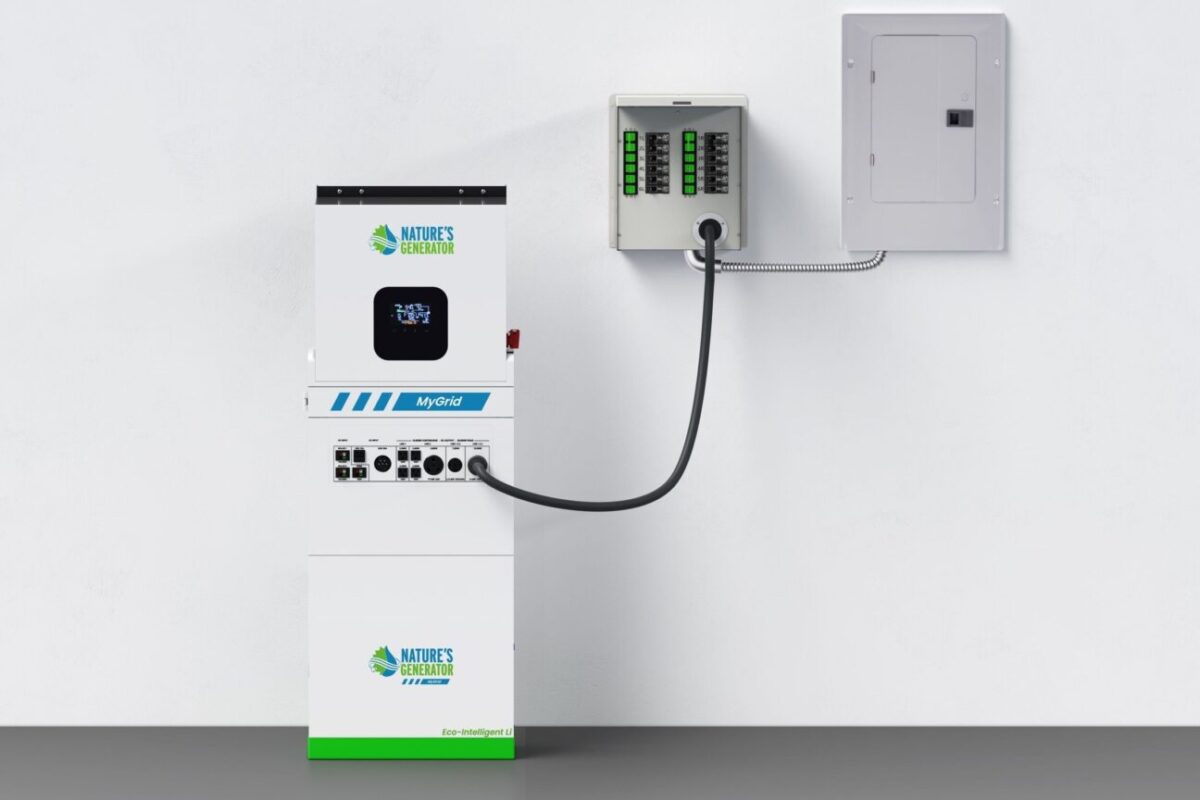From pv magazine USA
A year after the passage of the US Inflation Reduction Act (IRA), which created long-term industrial policy anchored by rich supply-side and demand-side incentives for manufacturing solar components, large global companies are betting big on US manufacturing.
Trina Solar, Canadian Solar, and Longi have each announced 5 GW of solar module manufacturing facilities, adding a combined 15 GW of capacity. To put the investments in context, each of these factories represent $200 million to $600 million in capital expenditure.
The United States only had about 7 GW of module manufacturing capacity in 2021. As of April 2023, American Clean Power said that i9n an eight-month period, 46 utility-scale clean energy manufacturing facilities were announced, bringing an expected 18,000 or more US jobs. Since then, several more major announcements have followed.
“The times of supply shortages are over,” said Thomas Koerner, senior vice president of Canadian Solar, in a recent interview with pv magazine USA at the RE+ conference in Las Vegas.
Canadian Solar told pv magazine USA that it is moving significant capacity into the United States to meet customer demand. A 10% adder to the investment tax credit is applied to projects that meet a certain threshold of US-made components, driving developers to shift their procurement decisions.
The move may also indicate the three companies looking to adjust to the new enforcement of anti-dumping and countervailing duty (AD/CVD) laws. Whereas the production of a solar cell used to determine the nation of origin in US Customs and Border Patrol enforcement of AD/CVD tariffs, but that has changed and the production of wafers is now used to determine the nation of origin in production.
The change in enforcement has drawn some fire from industry advocates and global panel suppliers. AD/CVD uncertainties led the supply of utility-scale solar panels to dry up in 2022, leading to a cascade of delayed and canceled projects and a deployment downturn in a year that was expected to bring installation growth.
Read industry reactions to the changes in enforcement of AD/CVD tariffs here. A guide to avoiding being assessed with AD/CVD tariffs can be found here.
For Canadian Solar, the new US production represents choice for its customers. The company has 12 GW of production of its TOPCon modules in Thailand, and 5 GW of production on the way in the United States. The sites will produce the same panels, but one will produce Made-in-USA goods that are expected to qualify for domestic content requirements for the tax credit bonus.
An upcoming pv magazine USA webinar, “Variables to consider in solar module procurement,” will address how price is no longer the defining factor in purchasing decisions. Country of origin, differences in quality and degradation rates, and other determining factors will be assessed.
Production plans
Trina Solar announced it will invest about $200 million in a Texas manufacturing plant with an annual manufacturing capacity of 5 GW. Trina’s new factory is expected to begin producing its Vertex line of modules with 210 mm wafers in 2024.
“We have long had a vision to manufacture solar products in the United States, and we are proud of the jobs we are creating and the investment we are making in the Wilmer community,” said Steven Zhu, president of Trina Solar US.
The Trina Solar facility is expected to create 1,500 local jobs.
“As someone who has lived in Texas for more than a decade, I’m proud to bring Trina’s first module factory in the Western Hemisphere to the Lone Star State,” said Zhu.
Longi says it will partner with utility-scale developer Invenergy to support a 5 GW panel assembly in Ohio. Invenergy says it will invest more than $600 million to construct a 1.1 million square foot crystalline silicon panel manufacturing facility. Operations are expected to begin in late 2023, and construction of the plant began in April. More than 850 jobs are expected to be created at the site.
“As an American company and a leading developer and operator of solar projects in the U.S., we recognize the importance of having a strong domestic supply chain to meet the fast-growing demand for affordable solar power,” said Art Fletcher, executive vice president of Global Sourcing at Invenergy.
Canadian Solar will also add 5 GW of manufacturing capacity, building a factory in Mesquite, Texas. The site will produce TOPCon solar panels. The company said it will invest $250 million in the factory, creating about 1,500 jobs along the way.
“Establishing this factory is a key milestone that will enable us to better serve our U.S. customers with the most advanced technology in the industry,” said Shawn Qu, founder and chief executive officer of Canadian Solar. “We hope that this is the first of many long-term investments we expect to make in the US, as we think strategically about a sustainable and resilient clean energy supply chain.”
This content is protected by copyright and may not be reused. If you want to cooperate with us and would like to reuse some of our content, please contact: editors@pv-magazine.com.




Silicon crystalline panels are difficult to recycle.. We will start hearing more andmore about it in the future.
Thin metal solar panels are best for recycling .. First Solar will accept all their solar panels for recycling pre paid ..
I thought that we had our dump issues well behind us. We will start seeing unwanted crsytalline silicon panels piling up in junkyards.
Difficult to recycle matters a lot more for water bottles, a solar panel that won’t be replaced for a minimum of 5 years, and in most cases more like 10, isn’t going to be a significant problem.
It’s the same situation as to why people don’t complain much about car parts being plastic. Because the average person throws out that much plastic every month, while the car part will only be trash in a decade.
Big increase in a small number. Hmm. I recently read that China expects to produce 1TW of solar panels per year by 2026. That is 1000 GW’s. Making this ‘huge investment’ seem a little like a spit in the bucket?
Not that I am complaining but there is a long way to go to shift production back to North America. R&D on better panels might help offset the labor advantage in China.